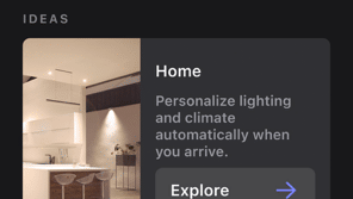They’ll never pay for this. Our existing customers will leave. We’ll lose all our new projects to our competitors. What will this do to our reputation?
If you’re considering selling premium support subscriptions to your customers but afraid of how they will react, you’re not alone. I talk to integrators all over the country every day who feel the same way.

Concerns about how your clients will respond to the introduction of paid service plans are not unreasonable, but your fear is overblown. Having worked directly with integrators of all shapes and sizes to introduce service plans to their clients, the response always follows a similar pattern — clients generally accept the change with far less fuss than anticipated, and integrators are left asking themselves, “Why did I wait so long to do this?”
Also by Jason Griffing: AI Has Arrived. Now What?
So, what should you anticipate from your clients? What steps can you take to ensure a smooth rollout?
When it comes to the question of how your clients will respond, each of them will fall into one of four categories. Ranging from most positive reaction to most negative, these categories are:
- Welcoming: Believe it or not, some portion of your clients will welcome the change. They will immediately see the ways that your new, more structured approach to service will benefit them. Some of them being business owners themselves, they may also recognize the important step you are taking to adapt your business to changing times.
- Easygoing: Most of your clients will readily adopt the new policies, either signing up for a plan or opting out (with an understanding of all that implies) without a whole lot of fuss one way or another.
- Confused: Other clients may be a little confused or unsure about the implications of your new program. They’ll require a little clarification but will otherwise be amenable to the fact that this is a natural evolution for your business.
- Upset: And finally, a small number of your clients will raise some objections. Most of these objections can easily be overcome. You may, however, end up with one or two clients who respond in an unreasonable or irrational way. The question is: Will you allow this vocal minority to dictate the future of your business?
With these categories in mind, the goal of your rollout becomes twofold:
First, introduce the plans in a way that deliberately aims to land as many clients as possible into the first two buckets. Next, have a solid plan in place for handling clients that fall into the second two. At the foundation of all this rests a solid messaging strategy.
There are a few simple points to keep in mind as you shape your communications plan.
Focus on client benefits: As you think about explaining why you are making this change, avoid the temptation to dive into all the reasons it makes sense for your business. Clients don’t care about this; they care about what’s in it for them. Make sure that benefits like peace-of-mind, choice, and flexibility form the core of your messaging.
Be positive: Always avoid sounding defensive or apologetic. Phrasing and word choice make all the difference here. Consider the varying responses you can elicit by framing this as an exciting new offering as opposed to a policy change they must now adhere to.
Be matter-of-fact: This is especially critical when overcoming objections in one-to-one conversations. Keep your explanations and answers to factual statements. Deliver the information in a calm, neutral tone that conveys confidence. And never try to sugar-coat or downplay the changes.
Also by Jason Griffing: It’s Time to Rethink Service
Once your messaging strategy is ironed out, call a huddle with your entire team to go over the key points. Make sure everyone has fully internalized how to talk about the new program. Conduct some role-playing sessions to pressure the team’s understanding and provide real-time feedback in a safe environment.
And then make the leap!
When crafted and introduced correctly, premium service plans are a win-win, creating a better service experience for customers and internal teams alike. Don’t let your fear hold you back from doing what’s right for your business.







